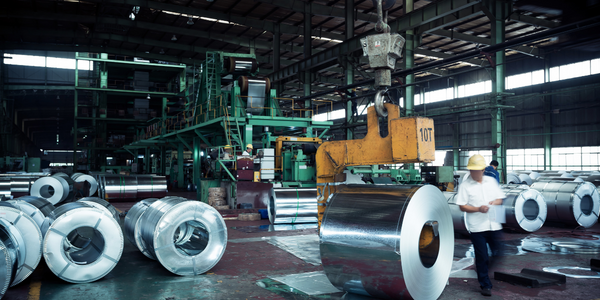Technology Category
- Analytics & Modeling - Virtual & Augmented Reality Software
- Wearables - Virtual Reality Glasses, Headsets & Controllers
Applicable Industries
- Metals
- Mining
Applicable Functions
- Product Research & Development
- Quality Assurance
Use Cases
- Virtual Prototyping & Product Testing
- Virtual Reality
Services
- Testing & Certification
About The Customer
VR Steel (Pty) Ltd is a company that designs, builds, and repairs fabricated mining equipment attachments. Their clients include major players in the mining industry such as Anglo Coal, Arch Coal, BHP Billiton, BMA Coal, Coal India, CRM, and Xstrata. VR Steel has dragline bucket customers in the US, South Africa, Australia, Brazil, and India. The company is committed to providing innovative solutions that enhance productivity and efficiency in the mining sector.
The Challenge
VR Steel, a company that designs, builds, and repairs fabricated mining equipment attachments, was faced with the challenge of optimizing dragline bucket performance and productivity for a wide range of media and mining conditions globally. They needed to develop a new, optimized bucket design that balanced efficiency, capacity, durability, and projected O&M costs. The company wanted to streamline the design process and provide their customers with design solutions that were guaranteed to fill easily and empty completely, operate at maximum capacity, boost wear protection, reduce operating costs, and improve overall efficiency.
The Solution
To address this challenge, VR Steel utilized EDEM, in conjunction with multibody dynamics simulation software, to simulate both the bulk soil dynamics and the dynamics of the bucket and lifting gear. This innovative, integrated particle-machine dynamics solution successfully modeled the transient particle-structure interaction, simulating the complete digging cycle of a dragline bucket. This virtual performance testing predicted the prototype bucket's mode and rate of fill, transient loading of bucket and gear, and wear patterns and rates. The use of EDEM virtual prototypes allowed VR Steel to field-test new design options, create custom designs for specific users, build fewer physical prototypes, shorten the design cycle, and increase customers’ productivity.
Operational Impact
Quantitative Benefit

Case Study missing?
Start adding your own!
Register with your work email and create a new case study profile for your business.
Related Case Studies.

Case Study
Goldcorp: Internet of Things Enables the Mine of the Future
Goldcorp is committed to responsible mining practices and maintaining maximum safety for its workers. At the same time, the firm is constantly exploring ways to improve the efficiency of its operations, extend the life of its assets, and control costs. Goldcorp needed technology that can maximize production efficiency by tracking all mining operations, keep employees safe with remote operations and monitoring of hazardous work areas and control production costs through better asset and site management.

Case Study
KSP Steel Decentralized Control Room
While on-site in Pavlodar, Kazakhstan, the DAQRI team of Business Development and Solutions Architecture personnel worked closely with KSP Steel’s production leadership to understand the steel production process, operational challenges, and worker pain points.

Case Study
Bluescope Steel on Path to Digitally Transform Operations and IT
Increasing competition and fluctuations in the construction market prompted BlueScope Steel to look toward digital transformation of its four businesses, including modern core applications and IT infrastructure. BlueScope needed to modernize its infrastructure and adopt new technologies to improve operations and supply chain efficiency while maintaining and updating an aging application portfolio.

Case Study
RobotStudio Case Study: Benteler Automobiltechnik
Benteler has a small pipe business area for which they produce fuel lines and coolant lines made of aluminum for Porsche and other car manufacturers. One of the problems in production was that when Benteler added new products, production had too much downtime.

Case Study
Continuous Casting Machines in a Steel Factory
With a very broad range of applications, steel is an important material and has been developed into the most extensive alloy in the engineering world. Since delivering high quality is absolutely crucial for steel plants, ensuring maximum productivity and the best quality production are the keys to competitiveness in the steel industry. Additionally, working conditions in steel factories are not suitable for workers to stay in for long periods of time, so manufactures usually adopt various machines to complete the steel production processes. However, the precision of these machines is often overestimated and the lack of flexibility also makes supervisors unable to adjust operating procedures. A renowned steel factory in Asia planned to improve its Distributed Control System (DCS) of furnaces as well as addressing the problem of insufficient accuracy. However, most well-known international equipment suppliers can not provide a satisfactory solution and local maintenance because the project needed new technologies to more accurately control equipment operations. By implementing Advantech’s automated monitoring and control solution, steel factories can not only improve the manufacturing processes but can also allow users to add additional functions to the existing system so as to make sure the operation runs at high efficiency.

Case Study
Automated Predicitive Analytics For Steel/Metals Industry
Asset to be monitored: Wire Compactor that produces Steel RebarCustomer Faced The Following Challenges:Dependent upon machine uptime.Pressure cylinders within the compactor fail to control compression and speed causing problems in binding the coil.Equipment failure occurs in the final stage of production causing the entire line to stop, can you say bottleneck?Critical asset unequipped with sensors to produce data.



